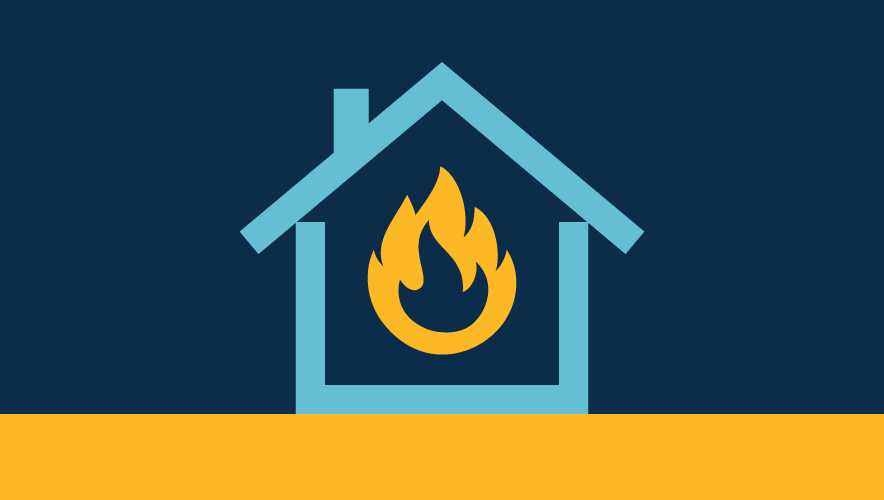Amid Rising Heat Deaths, U.S. Department of Labor Proposes Extreme Heat Safety Rule
Heat is the leading cause of weather-related deaths in the United States. In 2023, the death certificates of more than 2,300 people who died in the United States mention the effects of excessive heat—the highest number in 45 years—but that is likely only a fraction of the real death toll.
People who work outdoors or live without air-conditioning are at particular risk from heat-related illness and injury. According to the Bureau of Labor Statistics, 479 workers in the United States died from exposure to environmental heat between 2011 and 2022, with an average of 40 fatalities per year. In addition, there were 33,890 estimated work-related heat injuries and illnesses that resulted in days away from work.
In response to rising cases and temperatures, the U.S. Department of Labor (DOL) is taking steps to protect workers who face hazardous heat exposure, whether from working outside, indoors without adequate climate control, or near heat-generating processes or equipment.
The DOL released a proposed rule on Monday to require employers to develop an injury and illness prevention plan to control heat hazards in workplaces affected by heat at or above 80 degrees Fahrenheit (26 degrees Celsius).
The rule would require employers to evaluate heat risks and develop a worksite heat injury and illness prevention plan (HIIPP) with the input of nonmanagerial employees and their representatives. It would also mandate making the plan available at all worksites in a language employees understand.
“Workers all over the country are passing out, suffering heat stroke and dying from heat exposure from just doing their jobs, and something must be done to protect them,” said Assistant Secretary for Occupational Safety and Health Douglas L. Parker in a press release. “Today’s proposal is an important next step in the process to receive public input to craft a ‘win-win’ final rule that protects workers while being practical and workable for employers.”
The proposed rule garnered praise from workplace safety organizations, including the National Safety Council (NSC).
“Temperatures are rising throughout the country,” the NSC said in a press release. “It is critical employers understand the impact extreme heat has on their operations, including worker health and safety. Employers should establish a written heat injury and illness prevention program and document emergency action plans in order to immediately respond to any signs or symptoms of heat illness. Providing heat awareness and lifesaving training to workers creates not only safer workplaces but also safer communities, as these individuals carry their training with them wherever they go.”
What Would the Rule Require?
Employers would need to provide access to suitably cool drinking water and one or more break areas at work sites (including artificial or natural shade or air conditioning). Employers would also need to provide increased air movement (such as using fans and/or de-humidifiers) and shielding from radiant heat off of equipment.
Employers would also need to implement special acclimatization protocols to protect new and returning employees, who are at higher risk from heat-related illness than workers who are used to the conditions. These include a number of different options, including gradually increasing heat exposure throughout a worker’s first week.
Employers would need to provide employees with cooling personal protective equipment (PPE) and ensure the PPE’s cooling properties are maintained. Employers must also sustain a means of effective two-way communication with employees, staying in regular contact.
What Changes When a Heatwave Hits?
When temperatures hit a heat index of 90 degrees Fahrenheit (32 degrees Celsius) or the wet bulb globe temperature (taking into account ambient temperature, humidity, radiant heat, and air movement) meets the recommended exposure limit from the National Institute for Occupational Safety and Health, that counts as a “high heat trigger” under the DOL proposed rule.
At the high heat trigger threshold, employers would need to provide employees with at least one 15-minute paid rest break at least every two hours in a break area. This can include meal breaks, but the break time cannot include periods of donning or doffing PPE or walking to and from the break area.
Employers must also start observing employees closely for signs and symptoms of heat-related illnesses. Employers can implement at least one of three methods:
- A mandatory buddy system in which coworkers observe each other
- Observation by a supervisor or heat safety coordinator; no more than 20 employees observed per supervisor
- For employees who are alone at a worksite, employers must use two-way communication to make contact with the employees at least every two hours
Employers would also need to notify employees of the importance of drinking water, their right to take rest breaks, how to seek help in a heat emergency, and the location of drinking water and break areas.
As part of their HIIPP, employers must develop and implement a heat emergency response plan, including:
- A list of emergency phone numbers
- A description of how employees can contact a supervisor and emergency medical services
- Individuals designated to ensure heat emergency procedures are involved when appropriate
- A description of how to transport employees to a place where medical services can reach them
- Clear and precise directions to the worksite to provide to emergency dispatchers
- Protocols on how to respond to an employee experiencing signs and symptoms of heat-related illness, including heat stroke
Who is Exempt?
Although the rule would generally apply to all employers in the United States, it would not apply to:
- Work activities with no reasonable expectation of exposure at or above the heat trigger
- Short-duration employee exposures to high heat of 15 minutes or less in any 60-minute period
- Firefighting, search and rescue, or emergency response crews
- Work activities performed in indoor areas or vehicles where air-conditioning keeps the ambient temperature below 80 degrees Fahrenheit
- Telework
- Sedentary work indoors
What Comes Next?
At the moment, this is still a proposed rule that the DOL is looking for public comments on. Once it is published in the Federal Register later this month, the rule will be open for input for 120 days.
After reviewing public comments on the proposed rule, the DOL may finalize the language, conduct an interagency review, and then publish the final rule, which would become an enforceable regulation.











